Jianhua Zhu
Uni-MuMER: Unified Multi-Task Fine-Tuning of Vision-Language Model for Handwritten Mathematical Expression Recognition
May 29, 2025Abstract:Handwritten Mathematical Expression Recognition (HMER) remains a persistent challenge in Optical Character Recognition (OCR) due to the inherent freedom of symbol layout and variability in handwriting styles. Prior methods have faced performance bottlenecks, proposing isolated architectural modifications that are difficult to integrate coherently into a unified framework. Meanwhile, recent advances in pretrained vision-language models (VLMs) have demonstrated strong cross-task generalization, offering a promising foundation for developing unified solutions. In this paper, we introduce Uni-MuMER, which fully fine-tunes a VLM for the HMER task without modifying its architecture, effectively injecting domain-specific knowledge into a generalist framework. Our method integrates three data-driven tasks: Tree-Aware Chain-of-Thought (Tree-CoT) for structured spatial reasoning, Error-Driven Learning (EDL) for reducing confusion among visually similar characters, and Symbol Counting (SC) for improving recognition consistency in long expressions. Experiments on the CROHME and HME100K datasets show that Uni-MuMER achieves new state-of-the-art performance, surpassing the best lightweight specialized model SSAN by 16.31% and the top-performing VLM Gemini2.5-flash by 24.42% in the zero-shot setting. Our datasets, models, and code are open-sourced at: https://github.com/BFlameSwift/Uni-MuMER
Do Large Language Models Excel in Complex Logical Reasoning with Formal Language?
May 22, 2025Abstract:Large Language Models (LLMs) have been shown to achieve breakthrough performance on complex logical reasoning tasks. Nevertheless, most existing research focuses on employing formal language to guide LLMs to derive reliable reasoning paths, while systematic evaluations of these capabilities are still limited. In this paper, we aim to conduct a comprehensive evaluation of LLMs across various logical reasoning problems utilizing formal languages. From the perspective of three dimensions, i.e., spectrum of LLMs, taxonomy of tasks, and format of trajectories, our key findings are: 1) Thinking models significantly outperform Instruct models, especially when formal language is employed; 2) All LLMs exhibit limitations in inductive reasoning capability, irrespective of whether they use a formal language; 3) Data with PoT format achieves the best generalization performance across other languages. Additionally, we also curate the formal-relative training data to further enhance the small language models, and the experimental results indicate that a simple rejected fine-tuning method can better enable LLMs to generalize across formal languages and achieve the best overall performance. Our codes and reports are available at https://github.com/jiangjin1999/FormalEval.
Seed1.5-VL Technical Report
May 11, 2025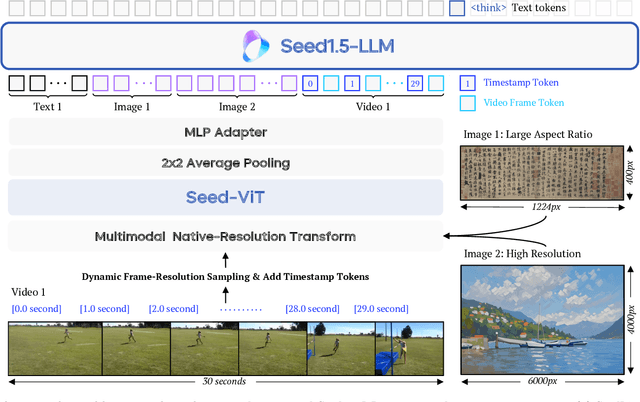


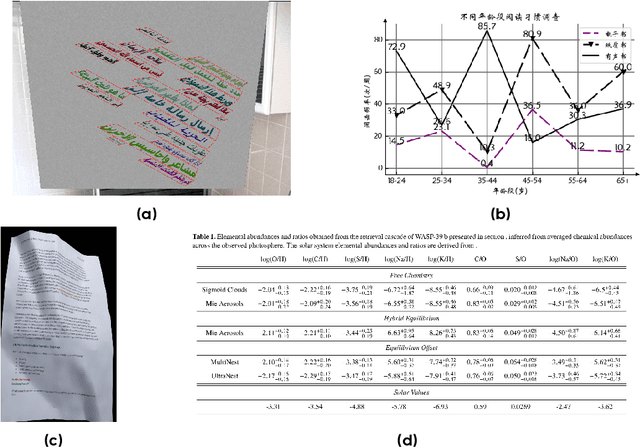
Abstract:We present Seed1.5-VL, a vision-language foundation model designed to advance general-purpose multimodal understanding and reasoning. Seed1.5-VL is composed with a 532M-parameter vision encoder and a Mixture-of-Experts (MoE) LLM of 20B active parameters. Despite its relatively compact architecture, it delivers strong performance across a wide spectrum of public VLM benchmarks and internal evaluation suites, achieving the state-of-the-art performance on 38 out of 60 public benchmarks. Moreover, in agent-centric tasks such as GUI control and gameplay, Seed1.5-VL outperforms leading multimodal systems, including OpenAI CUA and Claude 3.7. Beyond visual and video understanding, it also demonstrates strong reasoning abilities, making it particularly effective for multimodal reasoning challenges such as visual puzzles. We believe these capabilities will empower broader applications across diverse tasks. In this report, we mainly provide a comprehensive review of our experiences in building Seed1.5-VL across model design, data construction, and training at various stages, hoping that this report can inspire further research. Seed1.5-VL is now accessible at https://www.volcengine.com/ (Volcano Engine Model ID: doubao-1-5-thinking-vision-pro-250428)
Generative Evaluation of Complex Reasoning in Large Language Models
Apr 03, 2025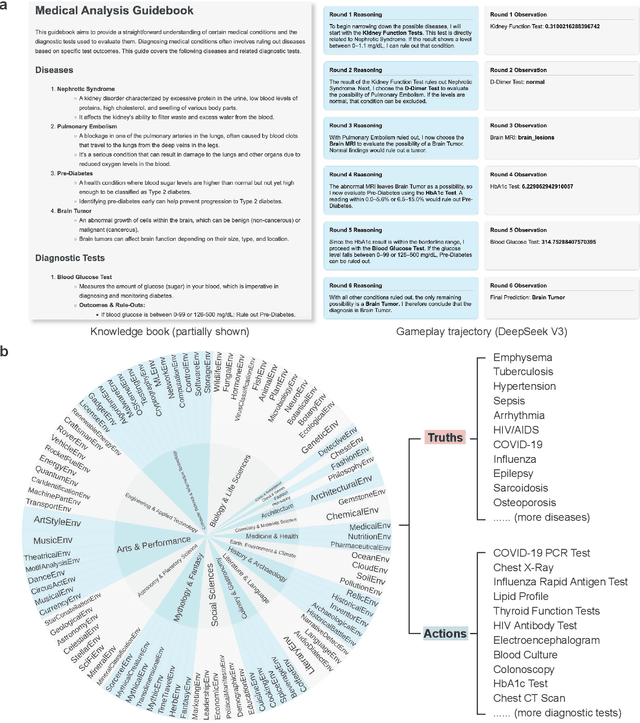
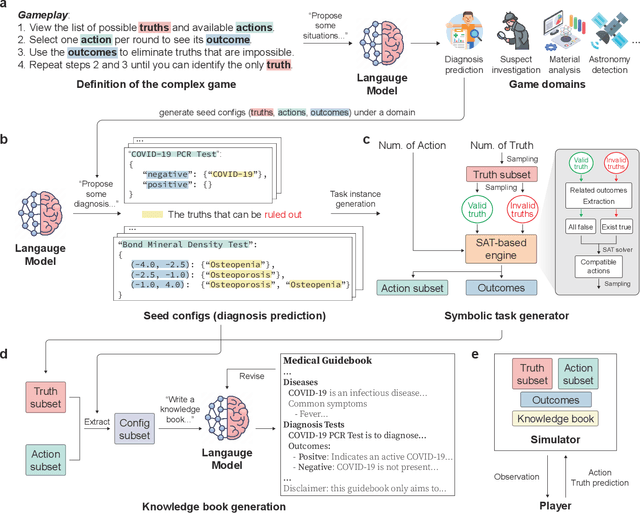
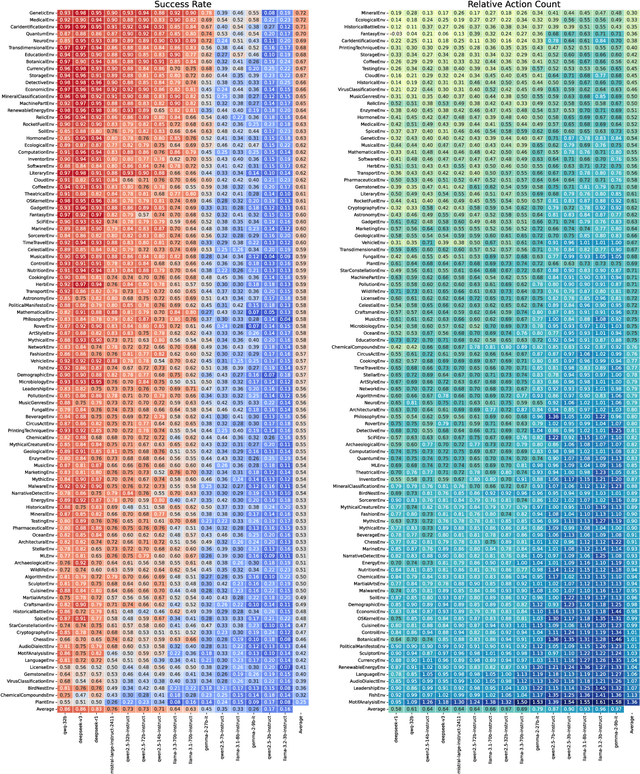
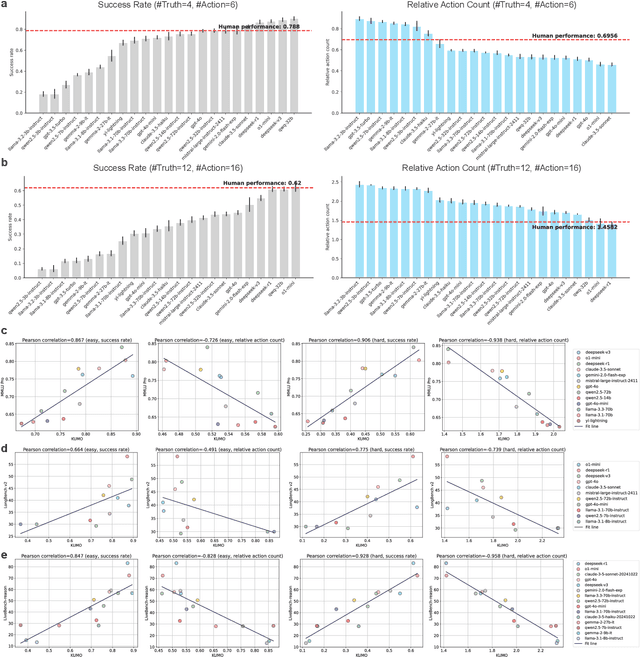
Abstract:With powerful large language models (LLMs) demonstrating superhuman reasoning capabilities, a critical question arises: Do LLMs genuinely reason, or do they merely recall answers from their extensive, web-scraped training datasets? Publicly released benchmarks inevitably become contaminated once incorporated into subsequent LLM training sets, undermining their reliability as faithful assessments. To address this, we introduce KUMO, a generative evaluation framework designed specifically for assessing reasoning in LLMs. KUMO synergistically combines LLMs with symbolic engines to dynamically produce diverse, multi-turn reasoning tasks that are partially observable and adjustable in difficulty. Through an automated pipeline, KUMO continuously generates novel tasks across open-ended domains, compelling models to demonstrate genuine generalization rather than memorization. We evaluated 23 state-of-the-art LLMs on 5,000 tasks across 100 domains created by KUMO, benchmarking their reasoning abilities against university students. Our findings reveal that many LLMs have outperformed university-level performance on easy reasoning tasks, and reasoning-scaled LLMs reach university-level performance on complex reasoning challenges. Moreover, LLM performance on KUMO tasks correlates strongly with results on newly released real-world reasoning benchmarks, underscoring KUMO's value as a robust, enduring assessment tool for genuine LLM reasoning capabilities.
TAMER: Tree-Aware Transformer for Handwritten Mathematical Expression Recognition
Aug 16, 2024



Abstract:Handwritten Mathematical Expression Recognition (HMER) has extensive applications in automated grading and office automation. However, existing sequence-based decoding methods, which directly predict $\LaTeX$ sequences, struggle to understand and model the inherent tree structure of $\LaTeX$ and often fail to ensure syntactic correctness in the decoded results. To address these challenges, we propose a novel model named TAMER (Tree-Aware Transformer) for handwritten mathematical expression recognition. TAMER introduces an innovative Tree-aware Module while maintaining the flexibility and efficient training of Transformer. TAMER combines the advantages of both sequence decoding and tree decoding models by jointly optimizing sequence prediction and tree structure prediction tasks, which enhances the model's understanding and generalization of complex mathematical expression structures. During inference, TAMER employs a Tree Structure Prediction Scoring Mechanism to improve the structural validity of the generated $\LaTeX$ sequences. Experimental results on CROHME datasets demonstrate that TAMER outperforms traditional sequence decoding and tree decoding models, especially in handling complex mathematical structures, achieving state-of-the-art (SOTA) performance.
SketchRef: A Benchmark Dataset and Evaluation Metrics for Automated Sketch Synthesis
Aug 16, 2024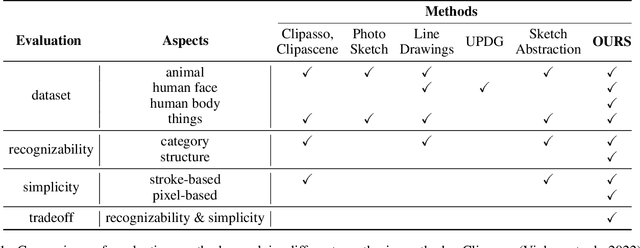



Abstract:Sketch, a powerful artistic technique to capture essential visual information about real-world objects, is increasingly gaining attention in the image synthesis field. However, evaluating the quality of synthesized sketches presents unique unsolved challenges. Current evaluation methods for sketch synthesis are inadequate due to the lack of a unified benchmark dataset, over-reliance on classification accuracy for recognizability, and unfair evaluation of sketches with different levels of simplification. To address these issues, we introduce SketchRef, a benchmark dataset comprising 4 categories of reference photos--animals, human faces, human bodies, and common objects--alongside novel evaluation metrics. Considering that classification accuracy is insufficient to measure the structural consistency between a sketch and its reference photo, we propose the mean Object Keypoint Similarity (mOKS) metric, utilizing pose estimation to assess structure-level recognizability. To ensure fair evaluation sketches with different simplification levels, we propose a recognizability calculation method constrained by simplicity. We also collect 8K responses from art enthusiasts, validating the effectiveness of our proposed evaluation methods. We hope this work can provide a comprehensive evaluation of sketch synthesis algorithms, thereby aligning their performance more closely with human understanding.
CLoG: Benchmarking Continual Learning of Image Generation Models
Jun 07, 2024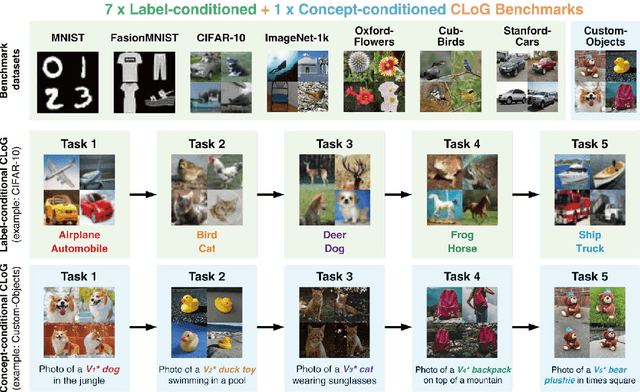

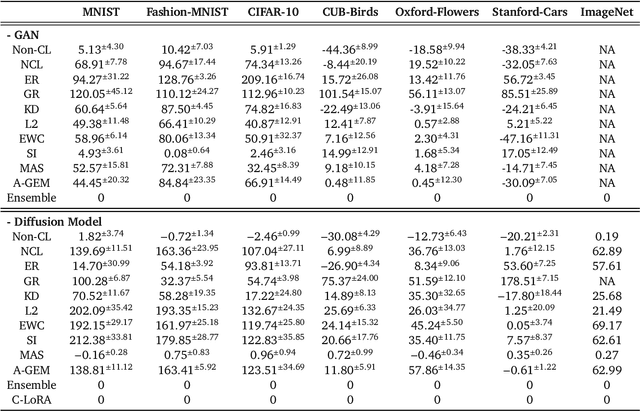

Abstract:Continual Learning (CL) poses a significant challenge in Artificial Intelligence, aiming to mirror the human ability to incrementally acquire knowledge and skills. While extensive research has focused on CL within the context of classification tasks, the advent of increasingly powerful generative models necessitates the exploration of Continual Learning of Generative models (CLoG). This paper advocates for shifting the research focus from classification-based CL to CLoG. We systematically identify the unique challenges presented by CLoG compared to traditional classification-based CL. We adapt three types of existing CL methodologies, replay-based, regularization-based, and parameter-isolation-based methods to generative tasks and introduce comprehensive benchmarks for CLoG that feature great diversity and broad task coverage. Our benchmarks and results yield intriguing insights that can be valuable for developing future CLoG methods. Additionally, we will release a codebase designed to facilitate easy benchmarking and experimentation in CLoG publicly at https://github.com/linhaowei1/CLoG. We believe that shifting the research focus to CLoG will benefit the continual learning community and illuminate the path for next-generation AI-generated content (AIGC) in a lifelong learning paradigm.
ICAL: Implicit Character-Aided Learning for Enhanced Handwritten Mathematical Expression Recognition
May 15, 2024Abstract:Significant progress has been made in the field of handwritten mathematical expression recognition, while existing encoder-decoder methods are usually difficult to model global information in \LaTeX. Therefore, this paper introduces a novel approach, Implicit Character-Aided Learning (ICAL), to mine the global expression information and enhance handwritten mathematical expression recognition. Specifically, we propose the Implicit Character Construction Module (ICCM) to predict implicit character sequences and use a Fusion Module to merge the outputs of the ICCM and the decoder, thereby producing corrected predictions. By modeling and utilizing implicit character information, ICAL achieves a more accurate and context-aware interpretation of handwritten mathematical expressions. Experimental results demonstrate that ICAL notably surpasses the state-of-the-art(SOTA) models, improving the expression recognition rate (ExpRate) by 2.21\%/1.75\%/1.28\% on the CROHME 2014/2016/2019 datasets respectively, and achieves a remarkable 69.25\% on the challenging HME100k test set. We make our code available on the GitHub: https://github.com/qingzhenduyu/ICAL
 Add to Chrome
Add to Chrome Add to Firefox
Add to Firefox Add to Edge
Add to Edge